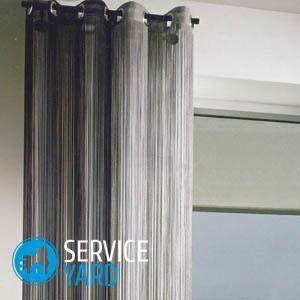
- What is a blender?
- How do I disassemble a Philips blender?
- How the blender works
- Replacing the blender in the blender
- What should I do if the blender speed controller is broken?
- What should I do if the blender stops?
Blender for today is the most popular kitchen equipment. With his help, the landlady makes life easier and daily "witchcraft" with food. The reasons for the failure of the blender there is a huge amount, and in order to repair it, it must first be properly untwisted? How to disassemble a blender and then fix it at home is the main theme of this article.
to the contents ↑What is a blender?
First you need to figure out what the device is all about. If you extremely simplify the description of its entire design, then the device is a motor with a nozzle. It can have a speed controller, as well as other functionality. That's why it's not difficult to disassemble a blender with your own hands.
to the contents ↑How to disassemble a Philips blender?
For this you will need the following tools:
- pliers;
- thin knife or a thin flat screwdriver;
- flat and long screwdriver;
- hammer;
- glue, which is designed for aircraft models or superglue.
To disassemble the blender, follow this procedure:
- Use the combination pliers to pull out the holder of the nozzles, it is also a cartridge.
- Take a narrow knife or a screwdriver, slide it between the casing and the body, and with a very light hammer blow off the welded seam. Repeat this action along the entire perimeter until the engine, together with the casing, moves freely inside the body itself.
Important! Be extremely careful next to the locks, in no case do not beat them. Use a wide knife or a thick screwdriver is not recommended, because a thin outer shell can burst.
- Damp the latches, and then remove the motor.
- The engine can be removed with the control board. In case this did not happen, pull the pliers at one end of the board - it is easily removed.
Important! Be extremely careful with the payment, because it is very fragile.
- Inside you can see 4 latches from the back cover. Unbend these latches on the arrows, so that the top cover will be right at your fingertips.
- Use a screwdriver to pry off the speed control cover. From the inside, bend the outer clips of the cable holder.
That's it, the device is parsed
to the contents ↑How the blender works
To date, there are 3 types of blenders, namely:
- Stationary.
- Manual it is also submersible.
- As part of a whole food processor.
The blender device in each case provides for the mandatory presence of an electric motor in the role of the main driving force, although the principle of their operation is somewhat different. For example, stationary blenders are somewhat similar to those that are part of whole combines. They have only two key assembly parts, which allow this device to work, namely:
- Bowl with a knife;
- Engine.
The repair of a Philips blender or any other normally consists of replacing or restoring a healthy condition of one of these elements.
to the contents ↑Replacing the knife in the blender
As for the blender knife itself, it's unlikely that you will be able to sharpen it at home. You can buy a new one, and in this case you can wait for as many as 3 variants of development of further events:
- The knife itself can be sold in the form of a separate spare part. If so, then you must remove the old one. To do this, you can use the help of an old towel, always clean. Grasp the blender knife with a rag, and then start unscrewing from the spindle. Your attention is drawn to the fact that the carving itself is left, so you should turn it to the other side, rather than usually.
- It also happens that the knife itself is secured with 2-3 nuts. In this case, the wrench can be removed from the blender or the combination pliers.
Important! The bowl must be separated from the output shaft, and the plug itself is disconnected from the mains. Otherwise, the rotating knife of the blender will easily disfigure your fingers and the problem of a non-working household appliance will seem to you a trifle compared to a problem that has arisen.
- If the knife is sold complete with an oil seal, change both parts immediately.
What should I do if the blender speed controller is broken?
Quite frequent malfunctions in blenders are associated with a speed switch. A whole and to check the efficiency of the speed controller is possible only in the workshop. But despite this, if you have knowledge of radio engineering, try to call this detail first. Most likely, it will be immediately clear whether this is the reason for the rather strange behavior of the blender.
To do this, the switch is removed from the device itself, in other words, evaporated, and then all its positions are checked.
Important! During normal operation, each contact must in turn give its short circuit.
You can try another way. Plug the device into the network, and listen to how it behaves at different speeds. As a rule, the faster the blade rotates, the greater the buzz.
Important! At the same time, remember that most models have a lock when switching on without a bowl.
to the contents ↑What should I do if the blender stops?
It so happens that the device does not want to work at all. But in fact, this situation is solved much easier than if the blender does not cut, nor does it grind.
To repair a Philips blender or other model of such household appliances:
- To begin with, strain your hearing, turn on the device. If there is a buzz, then most likely the fact is that the knife itself can not roll.
- Remove the bowl, then squeeze it gently with your finger, pencil or pin with a safety lock button. Earned?- If yes, the case is clearly in the bowl and knife.
- Much more interesting when the buzz is present, but the blender still does not work, even if you wring out the lock. The case is most likely in the motor, namely, one of the windings burned. It all depends directly on the price of the issue, if you have the opportunity to get a new engine at a wholesale price, replace it. But if you have a cheaper model it will be more profitable to reject the idea to fix the blender with your own hands.
Important! In the case when you do not observe any buzz along with the button turned on, start examining the power supply path. Check the power supply at the outlet. Practice shows that a large number of problems are solved just the same at this stage. Blender, just like any household appliance, breaks down relatively sparingly. Plug in the same outlet a working table lamp or something else. If everything is all right, go to the second procedure.
Checking the cord
To check the cord, you need to disassemble the blender, or rather its casing. Disconnect the appliance from the mains and then take a screwdriver - most imported models require special heads. Cross, as well as a flat screwdriver naturally will not work. Inside the blender, there must always be a power shoe to which the cord is soldered or fastened.
Methods of checking the cord:
- Check the voltage with a voltmeter or take a known good cord, connect it, try to assemble it. This way you can localize the breakdown.
- There are especially severe cases when the voltage can not be measured, because all more or less suitable contacts are closed plastic and are not disassembled. In order not to shred the device, take the needle, and solder the wire to it. You'll need two such tricks. Unplug the blender from the mains, pierce both cores of the wire with your upgraded needles, attach the tester terminals. See that the wires do not overlap each other - to do this, keep your hands out, and connect to the network. The result is shown on the tester display.
As you can see, in order to disassemble the blender, you need to have only a small amount of time and patience. And most of the failures can still be eliminated on their own. We hope that you have successfully coped with this and now you can continue to use such a convenient and practical device for household use.



